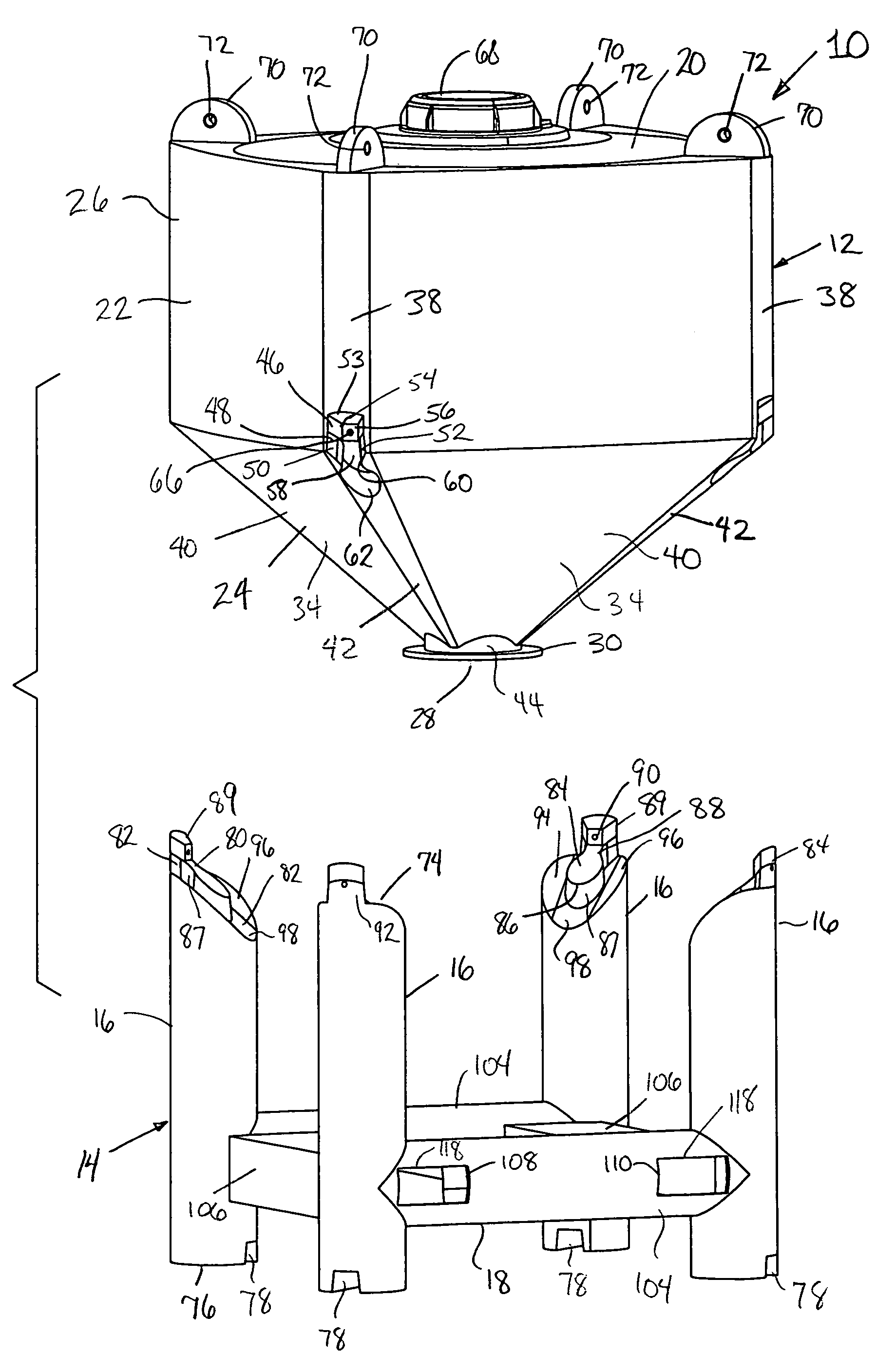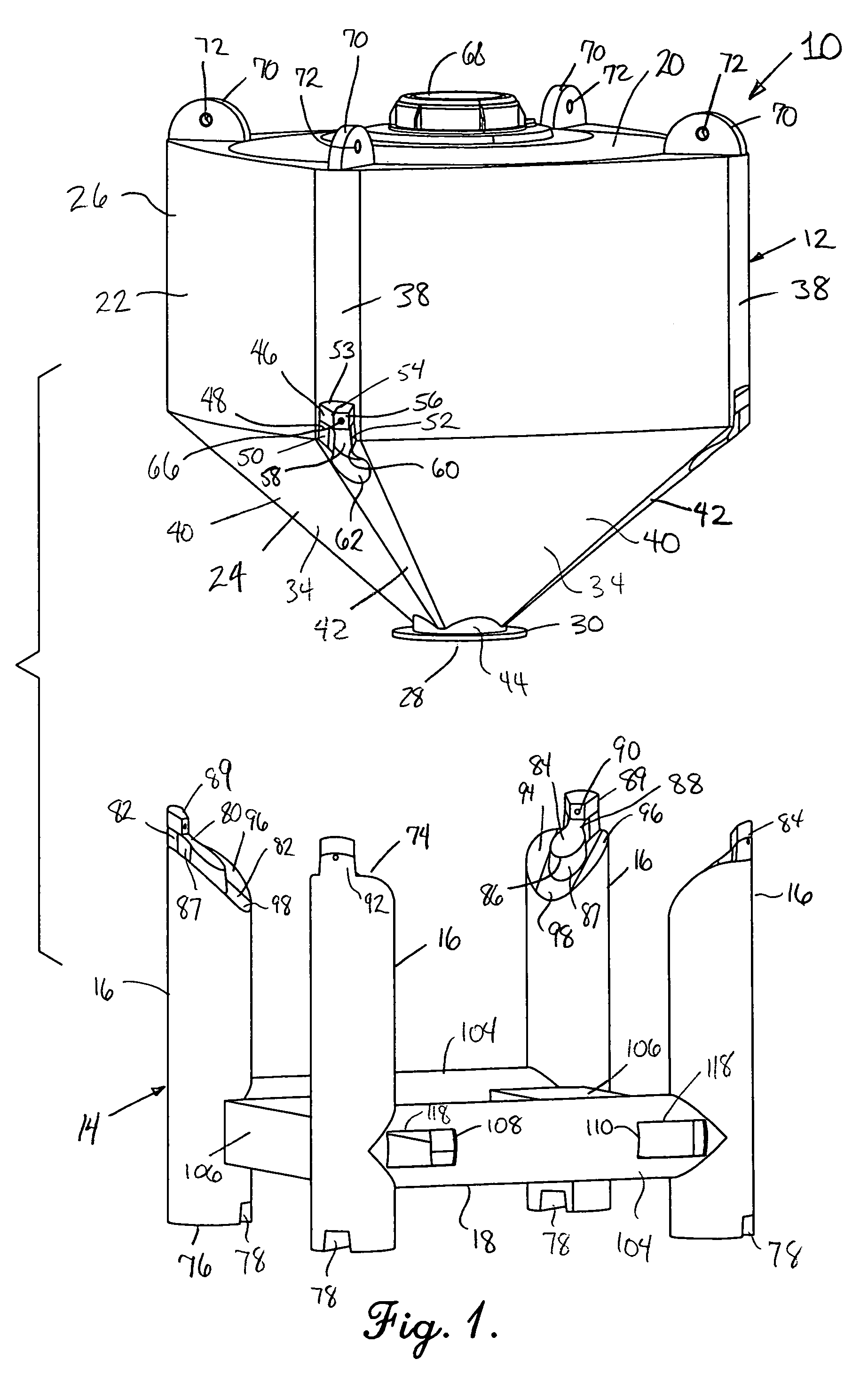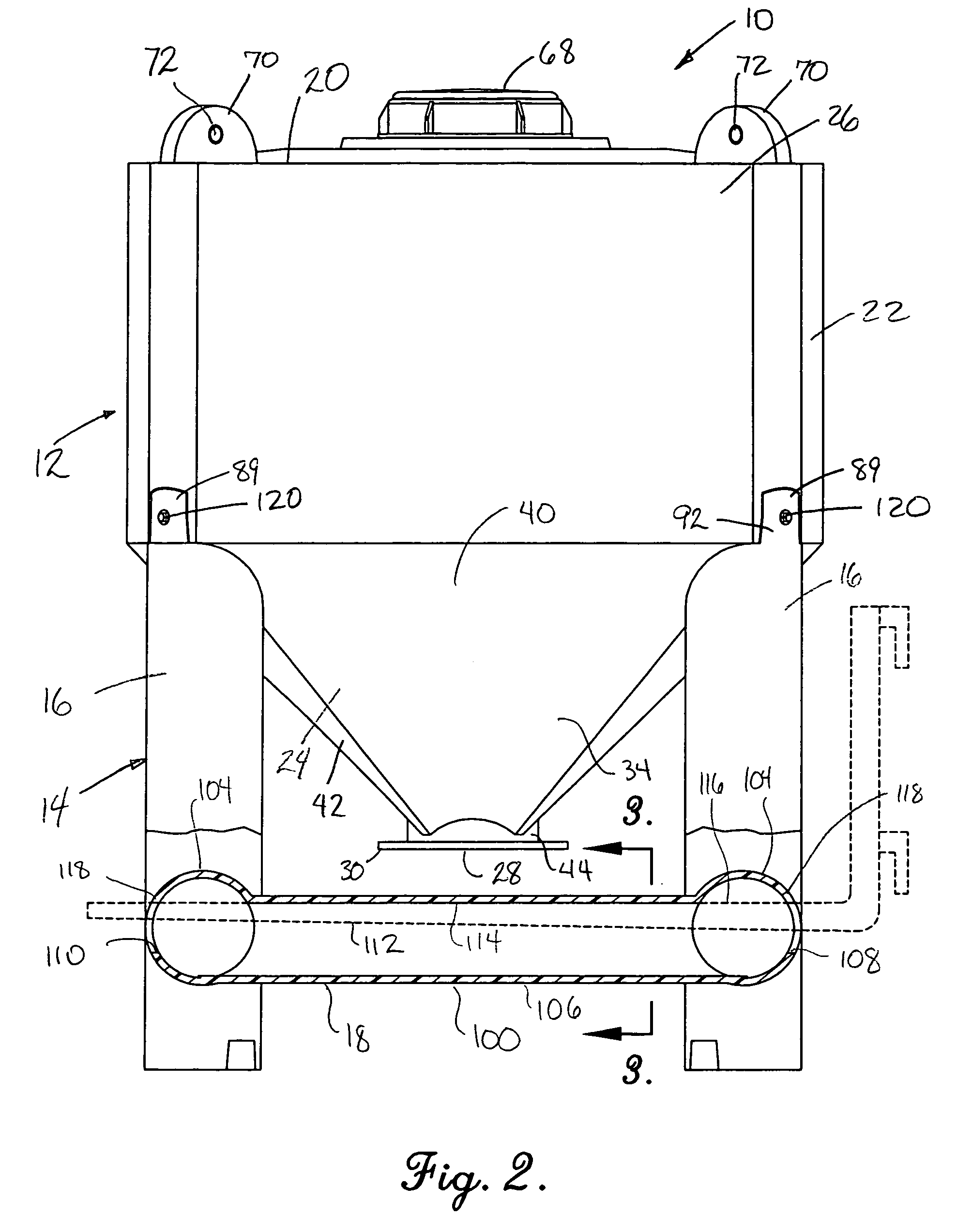Industrial hopper with support
a technology of hopper and support, applied in the direction of dismountable cabinets, liquid transfer devices, lighting and heating apparatus, etc., can solve problems such as problems, and achieve the effects of preventing spreading, efficient configuration, and reducing material consumption
- Summary
- Abstract
- Description
- Claims
- Application Information
AI Technical Summary
Benefits of technology
Problems solved by technology
Method used
Image
Examples
Embodiment Construction
[0016]Referring now to the drawing, an industrial hopper and support system 10 broadly includes a hopper 12 adapted for receiving material therein and discharging material therefrom, and a support 14 positioned beneath said hopper 12 for elevating the hopper 12 above a supporting surface. The hopper 12 hereof is especially configured for receiving and dispensing solids (i.e., particulates, dust, pellets, granular materials, and the like) although it may also be used for retaining and dispensing liquids. The hopper 12 and support 14 are cooperatively configured so that the support 14 may receive and retain the hopper 12 thereon, leaving a wide area for access to receive the hopper 12 discharge. To this end, the support 14 includes a multiplicity of upright support legs 16 and a connector 18 for maintaining the legs 16 in position whereby the hopper 12 may be supported atop the legs 16 and beneficially act structurally to retain the legs 16 against spreading due to the weight of the h...
PUM
 Login to View More
Login to View More Abstract
Description
Claims
Application Information
 Login to View More
Login to View More - R&D
- Intellectual Property
- Life Sciences
- Materials
- Tech Scout
- Unparalleled Data Quality
- Higher Quality Content
- 60% Fewer Hallucinations
Browse by: Latest US Patents, China's latest patents, Technical Efficacy Thesaurus, Application Domain, Technology Topic, Popular Technical Reports.
© 2025 PatSnap. All rights reserved.Legal|Privacy policy|Modern Slavery Act Transparency Statement|Sitemap|About US| Contact US: help@patsnap.com



